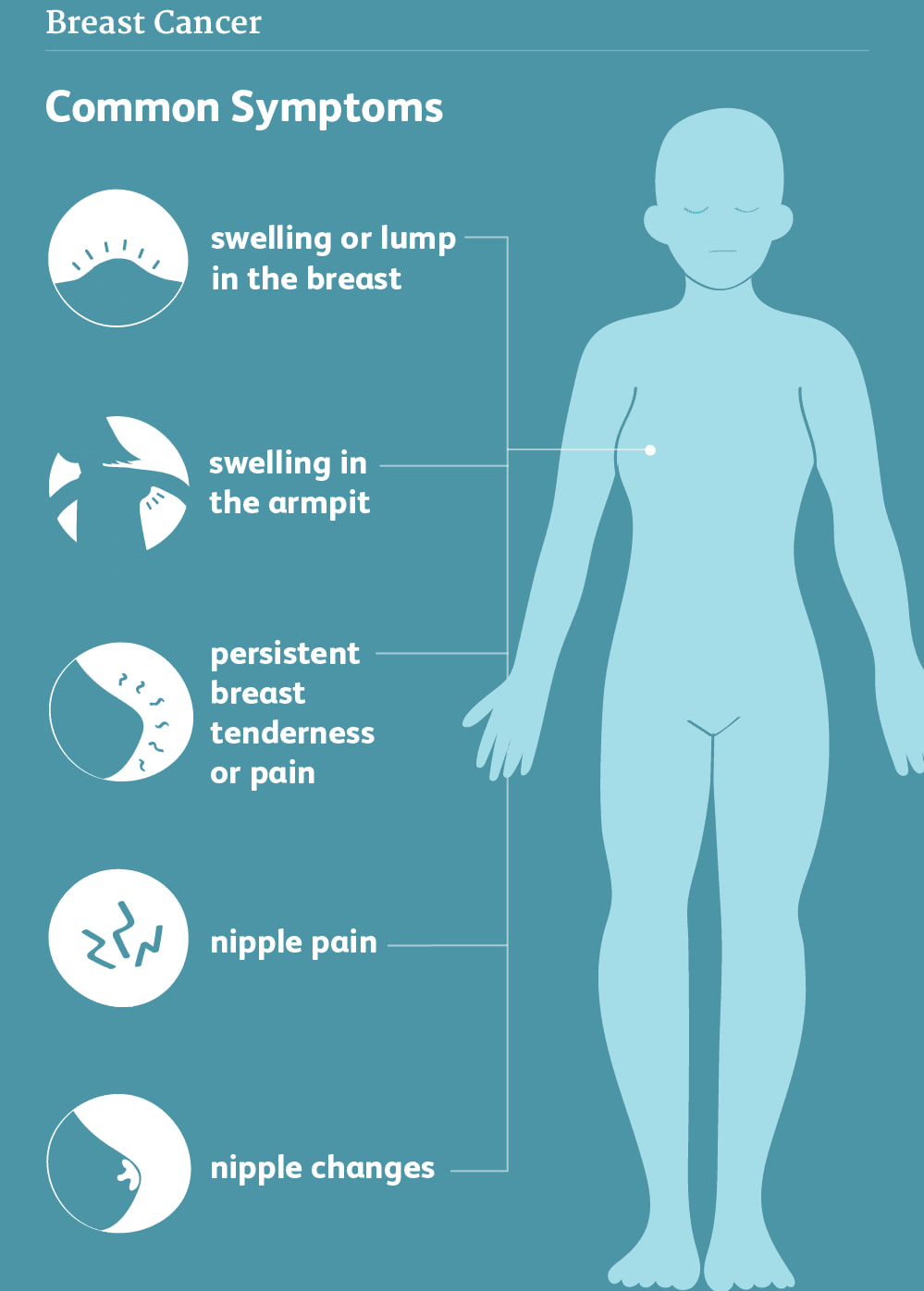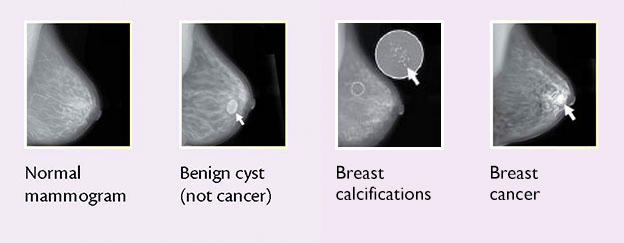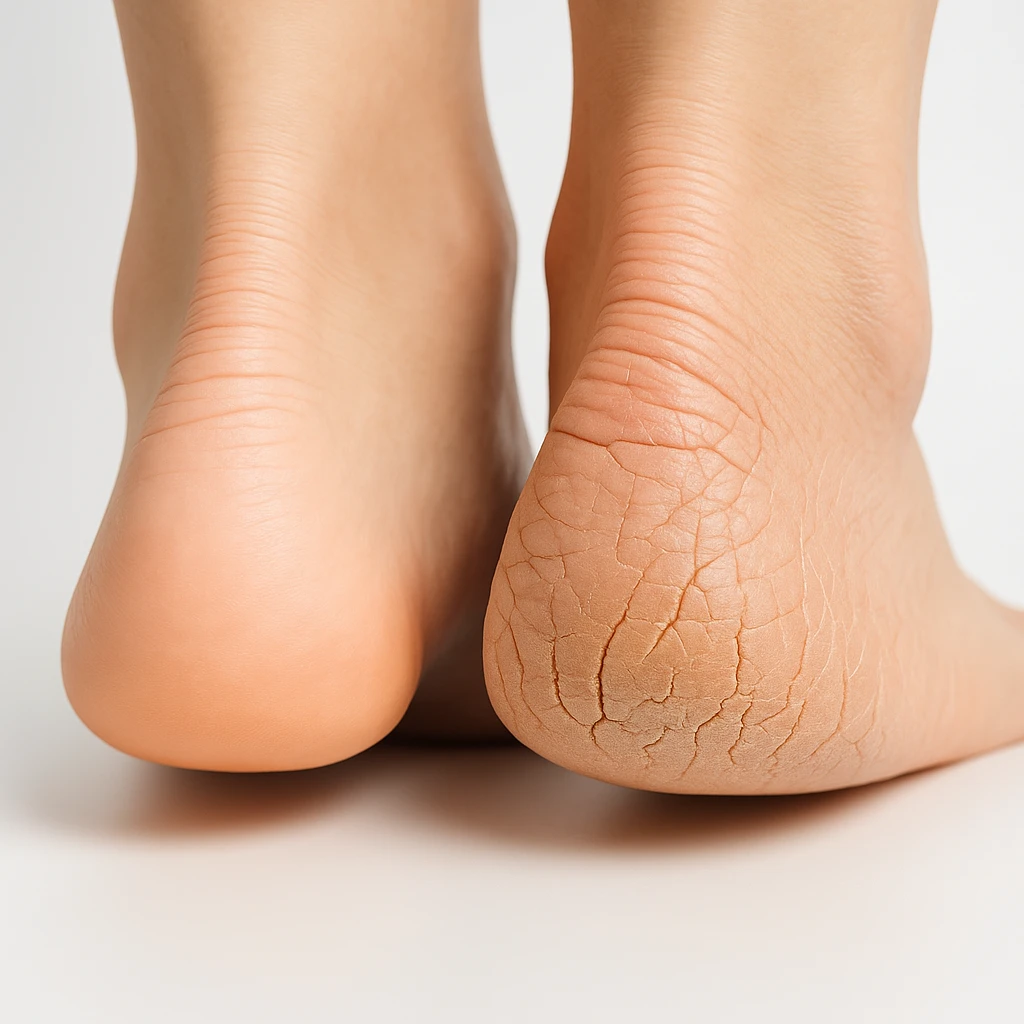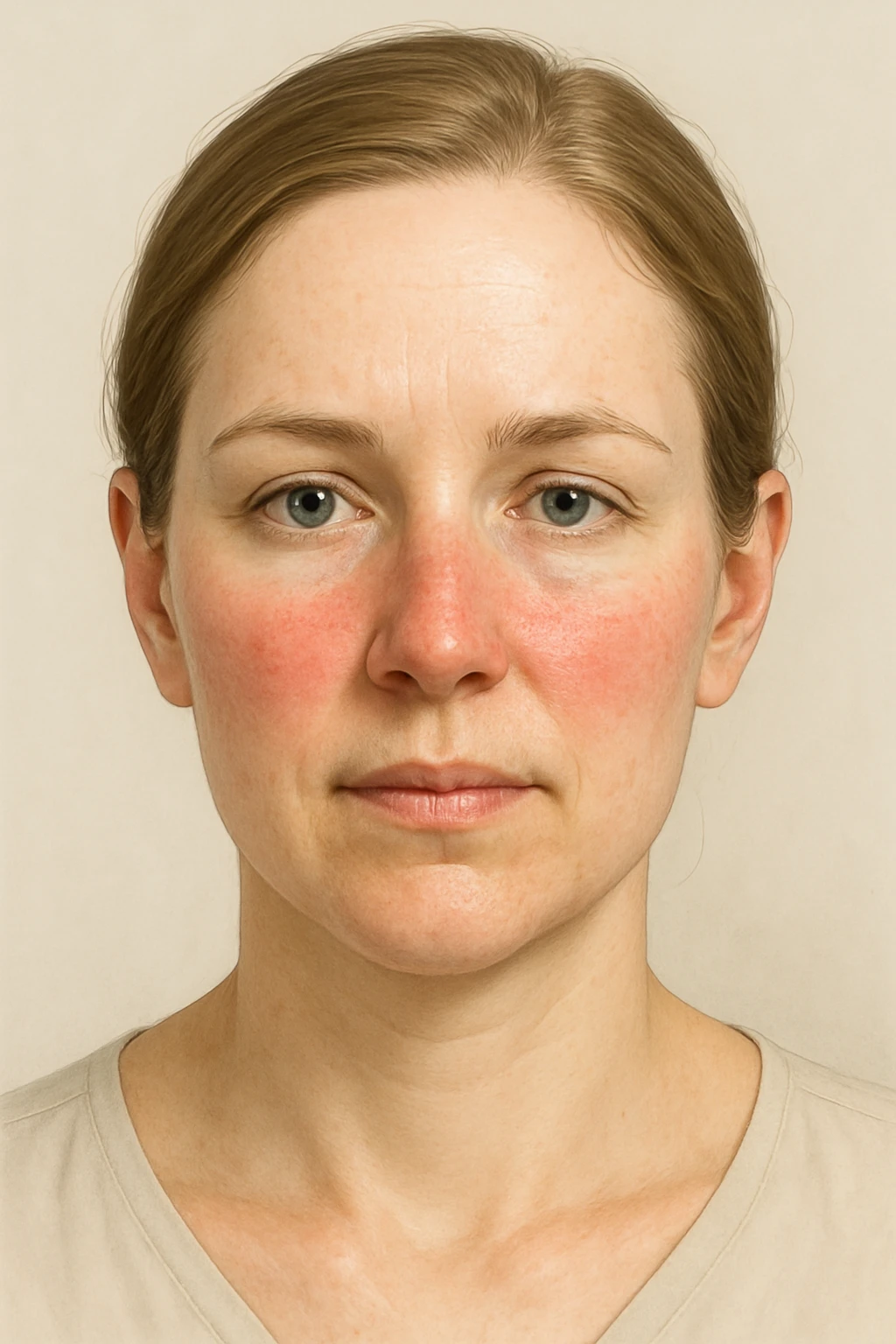12 Early Signs of Breast Cancer You Shouldn’t Ignore
- Foreword
- Part One: When the Breast Feels Different
- Part Two: Nipple Changes and What They Mean
- Part Three: Unfamiliar Sensations — Pain, Tingling, and Itch
- Part Four: Visual Clues in the Mirror
- Part Five: The Signs That Aren’t in the Breast
- Part Six: Why “Lump” Is Not Always First
- Part Seven: Frequently Asked Questions
- Closing Thoughts
Foreword
Breast cancer doesn’t always begin with a lump. That’s the part that surprises people — the idea that something so serious could start without anything obvious to feel, press, or point to. For some, the earliest signs are visual: a change in shape, a faint ripple in the skin, or a nipple that starts to turn inward. For others, it’s a sensation — discomfort, heaviness, or an itch that doesn’t make sense. These small shifts are easy to overlook, especially in a body that’s already changing with age, hormones, or weight.
This article is for people who don’t want to wait for a dramatic signal. It’s for those who’ve caught themselves wondering whether that patch of thickened skin, that new ache, or that subtle difference in the mirror could be worth a second opinion. Not because everything unusual is cancer — most things aren’t — but because early-stage breast cancer often whispers instead of shouting. And when you know what those whispers sound like, you’re better positioned to act before the disease gains momentum.
We’ll go through the earliest signs, one by one. Not in a rushed checklist, but in context — what they mean, what they might look or feel like, and how they fit into the bigger picture of early detection. We’ll also talk about what these signs aren’t. Breast pain, for example, is common and often unrelated to cancer — but sometimes, in the right context, it’s part of the story.
There are twelve core signs we’ll explore. But more importantly, we’ll look at how those signs interact — how a cluster of small changes can mean more than the sum of its parts. This isn’t about causing alarm. It’s about offering clarity in a space where many people feel unsure. The goal is to help you see your own body more clearly, not to guess, but to notice.
If something feels off — if a part of you is quietly asking, “Has this always been here?” — it may be time to listen. Let’s take a look, starting where most people do: with what it means when the breast simply feels different.
Part One: When the Breast Feels Different
Most people expect a lump. They’re taught to feel for something round, hard, or unusual — something they can point to and say, “That wasn’t there before.” And while many breast cancers do eventually form a detectable mass, the truth is that the earliest sign isn’t always a lump at all. Sometimes, the only real signal is that the breast feels unfamiliar — not painful necessarily, but off. And that unfamiliarity often arrives in ways that don’t get noticed right away.

One of the more subtle changes is a shift in shape or contour. Not a dramatic swelling, but something more gradual: a difference in how the breast sits against the chest, how it moves when you lift your arms, how one side seems subtly fuller, or pulled, or asymmetric in a way it wasn’t a few months ago. These aren’t changes most people spot while dressing in the morning. They often appear first in the mirror, or even in a photo — a difference in fit, angle, or drape that draws the eye only in retrospect.
Skin texture can also change early on. Some people describe it as a patch of thickness — not a mass, but a place that feels denser under the skin, almost like a scar that hasn’t healed. In rarer cases, the skin may start to look dimpled or puckered, a visual cue that tissue underneath is pulling inward. This is sometimes referred to as “peau d’orange” — French for orange peel — because of the way the skin takes on a slightly rough or pitted surface. It’s not painful. It doesn’t itch. And that’s exactly why it’s so often missed until later.
Then there’s fullness without form — a sense that one breast feels heavier, slightly swollen, or different in consistency. This isn’t always visible, and it’s not necessarily accompanied by redness or heat. It might just feel unfamiliar in the hand, less soft, or less mobile under the skin. In some cases, what’s being felt isn’t the tumor itself but the tissue around it responding to inflammation or subtle changes in lymphatic drainage. That’s why some people say they noticed a change but couldn’t quite describe what it was — only that one side no longer felt like the other.
These early signs don’t always follow a pattern. They don’t always show up clearly or together. And they don’t always mean cancer. Hormones, aging, and normal variation can cause asymmetry, swelling, or firmness. But when a change is persistent, when it doesn’t shift with your cycle or fade with time, that’s when it becomes worth bringing to a doctor’s attention — not because it’s alarming, but because it’s new.
Breast cancer doesn’t always announce itself. Sometimes it just feels wrong before it looks wrong. And if your hand or eye notices that change — even before you can explain it — that awareness might be the first step toward catching something early.
Part Two: Nipple Changes and What They Mean
For many people, the nipple feels like neutral territory — a place that’s expected to shift slightly with hormones, cold, touch, or time. It’s not uncommon for one side to sit a little higher or respond differently to stimulation. So when something does begin to change — especially slowly — it doesn’t always raise alarm. But the nipple is one of the most important places to watch, because changes here can reflect what’s happening deeper beneath the surface, especially in the ducts behind it.

One of the earliest and most overlooked signs is inversion — when a nipple that normally points outward begins to turn inward or flatten. Some people are born with inverted nipples, and in those cases, there’s nothing to worry about. But when the change is new — especially if it’s on one side only — it may signal that something inside the breast is pulling the tissue inward. That pulling could be caused by fibrosis, inflammation, or, in some cases, a growing tumor that’s tethering nearby structures. It’s not usually painful. It often happens so gradually that a person can’t quite say when it began. But once noticed, it should be monitored carefully.
Scaling, crusting, or redness around the nipple is also worth attention — not because every patch of dry skin is a concern, but because persistent irritation in this area may reflect an underlying condition called Paget’s disease of the breast. Paget’s is rare, but it can mimic eczema: flaking, itching, burning. What makes it different is that it doesn’t improve with topical creams and may slowly worsen over weeks or months. Sometimes, it’s the only visible sign of a deeper cancer growing within the breast ducts.
Another sign that often prompts hesitation — and sometimes fear — is nipple discharge. Many people experience occasional discharge that turns out to be entirely benign, especially during hormonal shifts or after stimulation. But discharge that is spontaneous, comes from a single duct, or appears bloody or clear rather than milky may need further evaluation. It’s not that all discharge is dangerous — most isn’t. But when it’s persistent, one-sided, and occurs without pressing or squeezing, it may be related to a papilloma or ductal carcinoma in situ (DCIS), both of which can be precancerous or cancerous.
Sometimes the nipple simply looks different. It may flatten subtly, rotate to one side, or take on a darker or lighter hue than usual. These changes might not cause physical discomfort, but they may reflect tension beneath the skin, changes in blood flow, or stretching of the tissue as something grows inside. The challenge is that these visual shifts can be hard to detect unless you’re looking for them — especially if you don’t examine your breasts from multiple angles or under consistent lighting.
Nipple changes rarely come with pain. They rarely come with urgency. But that’s precisely why they can be dangerous to ignore. In early breast cancer, the nipple often acts like a quiet reporter — signaling, with subtle changes, that something in the breast’s architecture is being slowly rearranged. And when the signal is picked up early, even before a lump forms, that information can change the entire course of treatment.
Part Three: Unfamiliar Sensations — Pain, Tingling, and Itch
People are often told that breast cancer isn’t painful — and that’s true, in a general sense. Most early-stage cancers don’t come with sharp or stabbing sensations. But the absence of pain doesn’t mean the presence of pain is irrelevant. In fact, some early cancers do produce discomfort, just not in the way people usually expect.
Pain in the breast is common and usually harmless. It may come and go with hormonal cycles, intensify with stress, or settle into one quadrant for a few days before resolving without treatment. But when pain shows up outside the usual hormonal rhythm, stays in the same exact spot, or gradually increases in intensity over weeks, it deserves attention. The pain may not be severe — sometimes it’s described more as a deep ache or internal soreness — but when it doesn’t shift or respond to supportive bras or anti-inflammatories, it becomes a symptom worth tracking. It’s not about panicking over every twinge. It’s about noticing when a new sensation doesn’t follow the usual script.
Tingling or burning is another type of sensory change that often gets overlooked. These feelings might be faint and intermittent — just a flicker under the skin, a strange nerve-like buzz that doesn’t match the area’s normal sensitivity. In some cases, they’re written off as musculoskeletal, especially if they radiate toward the armpit or shoulder. And often, they are. But when tingling becomes localized, persistent, and without a clear orthopedic cause, it may reflect changes in the tissue or lymphatic structures just beneath the skin. Tumors don’t have to be large to press against nerves or trigger low-level inflammatory responses.
And then there’s itching — not the kind that resolves with lotion or a change in detergent, but a localized itch that’s deep, persistent, and unrelated to any rash. The breast isn’t a common site for chronic itch, so when one area starts to itch without explanation — especially if it’s the same spot over and over — it may be an early sign of skin involvement or inflammatory breast cancer, which can present in surprisingly vague ways. Inflammatory breast cancer is rare, but it’s aggressive and often lacks a defined lump. What patients notice instead is heat, redness, or irritation that doesn’t go away. The itching can come first.
Sensory symptoms are easy to dismiss because they feel minor — a nuisance more than a threat. But persistent discomfort in one part of the breast, especially when it resists ordinary explanations, may be one of the earliest available clues. It doesn’t confirm anything on its own. But it adds context — especially when paired with other subtle shifts.
So if something feels off — not intensely, but consistently — don’t write it off as nothing. That persistence, that small departure from the norm, is sometimes the only warning the body offers at the start.
Part Four: Visual Clues in the Mirror
Most of us don’t inspect our bodies in fine detail. We get dressed, undressed, maybe glance in the mirror, but we aren’t necessarily looking — not closely — for changes in symmetry, skin tone, or shadow. And that’s part of what makes visual signs of breast cancer so easy to miss. They’re not dramatic at first. They don’t jump out. Instead, they creep in gradually — a line where there wasn’t one, a bit of unevenness that’s new but hard to pin down. You have to be looking andremembering to catch them early.
One of the most telling signs is a change in breast contour. This might appear as one breast sitting slightly higher than the other, or bulging a bit differently when you raise your arms. The skin may no longer drape the same way. These changes are often missed because they happen slowly — and because most people assume that mild asymmetry is normal. And in truth, it often is. But when a shift is new, and especially when it stays fixed regardless of cycle or posture, it becomes more than a quirk. It becomes a marker of change.
Redness, while more obvious, is just as commonly overlooked — especially if it appears without pain or heat. People may assume it’s irritation from a bra, a mild allergic reaction, or a fleeting rash. But redness that lingers or deepens, especially in a localized patch, can indicate inflammation deep in the tissue. In cases of inflammatory breast cancer — which doesn’t usually involve a lump — redness and thickened skin are often the first and only visible clues. It might look like a mild sunburn. It might not feel like much. But when the skin doesn’t return to its usual appearance within a few days, it’s worth showing to a physician.
Another subtle clue is dimpling — small puckers or indentations that may only appear when the breast is lifted, stretched, or viewed from an angle. These dimples can be incredibly slight, almost like a crease that doesn’t smooth out. They often indicate something beneath the skin is pulling inward, usually fibrous tissue tethered by a tumor or scarring from its growth. The dimples don’t have to hurt. They don’t have to change color. They just stay, often in a spot where there was once only smooth skin.
Some people also notice changes in vein patterns — usually more prominent or bulging veins on one breast, which weren’t there before. This can happen with inflammation or increased blood flow, and while not specific to cancer, it’s something to note if it arises without an obvious trigger.
It helps to look in the mirror with intention — arms down, arms raised, from the front and from the side. Changes often appear more clearly in motion, or from a slightly oblique view. You don’t need to obsess. But you do need to know your baseline — so that when something shifts, you can see it for what it is: not necessarily urgent, but definitely not invisible.
Because sometimes, what the mirror shows before your hands ever feel — that’s the first sign that matters.
Part Five: The Signs That Aren’t in the Breast
It surprises many people to learn that not all early signs of breast cancer appear in the breast itself. Sometimes, the first clue is somewhere else entirely — under the arm, above the collarbone, or scattered through the body in the form of fatigue or subtle weight changes. These signals don’t point directly at the breast, but they matter because they reveal the cancer’s earliest efforts to move, spread, or disturb normal physiology. They may not be dramatic, but they’re often the only signs available before a lump is felt.
One of the most important places to pay attention is the armpit — more specifically, the lymph nodes under it. These nodes act like filters for the breast and surrounding tissue, catching debris, fighting infection, and — when cancer is present — occasionally becoming early staging grounds for spread. A swollen node in the armpit can feel like a small marble or bean. It might be painless, firm, or slightly tender. Infections can cause the same thing, so not every swollen node is worrisome. But when the swelling persists for several weeks, or seems unusually firm and doesn’t shrink, it may be a sign that breast tissue nearby needs a closer look.
Similar logic applies to nodes above the collarbone. These are even less commonly checked — tucked into the soft hollow just beside the neck. But when they become visibly enlarged, especially on one side, doctors often think beyond infection and begin considering systemic causes, including malignancies.
Beyond the lymphatic system, fatigue is another way cancer occasionally makes its presence known early. This isn’t the kind of tiredness that comes after a poor night’s sleep. It’s deeper — a heaviness in the muscles, a sense of effort in routine tasks, or a fog that doesn’t lift with rest. It’s easy to write off, especially in busy people juggling work, family, and stress. But persistent fatigue, especially if it arises with no change in routine, may be the result of inflammatory cytokines released by tumors — or even subtle anemia caused by cancer-related disruption in the bone marrow or chronic inflammation. In isolation, it’s not diagnostic. But as part of a constellation, it matters.
Unintended weight loss also deserves attention. Breast cancer doesn’t typically cause dramatic shedding of pounds early on. But when a person begins losing weight without trying — and especially without any shift in appetite or exercise — it may be worth pausing to ask why. Tumors consume energy. They alter metabolism. And in doing so, they can cause subtle but steady body changes that seem disconnected from food or movement.
In the earliest stages, cancer doesn’t always call attention to itself in obvious ways. Sometimes it hints — through a lymph node that doesn’t shrink, an energy level that won’t bounce back, or a body that’s quietly recalibratingwithout a clear reason. These aren’t diagnostic signs. But they are open doors — clues that, when added to physical changes in the breast, form a fuller picture of what might be developing.
Part Six: Why “Lump” Is Not Always First
For decades, the idea of finding a lump has been at the center of breast cancer awareness. It’s what people are taught to feel for during self-exams. It’s what most public health messaging revolves around. And in many cases, it’s true — a lump is the first and most obvious sign of something wrong. But what’s often left out of the conversation is this: not all lumps are detectable by hand, and not all cancers start as lumps at all.

The nature of a tumor — its size, depth, location, and density — determines whether it can be felt during a self-exam. A mass deep in the tissue or close to the chest wall may not be palpable until it’s quite large. Likewise, smaller tumors surrounded by dense glandular tissue can be masked by the normal complexity of the breast. That’s why mammograms, not hands, remain the gold standard for early detection — because they can pick up what even the most diligent exam might miss.
When a lump is present, it doesn’t always fit the description people expect. It might not be round. It might not feel hard. Some lumps are irregular in shape, firm but mobile, or subtly fixed in one direction without feeling immovable. Others are diffuse — not a “ball,” but a region that just feels different, denser, or less compressible than the tissue around it. This variability is what makes breast exams difficult to interpret, especially for people without a reference point for how their own tissue usually feels.
And then there’s ductal carcinoma in situ (DCIS) — a form of early breast cancer that doesn’t always form a mass at all. Instead, it grows inside the milk ducts, sometimes spreading widely before it ever distorts the surface or creates a lump. DCIS is often found through calcifications on a mammogram, not through touch. Without imaging, it may go undetected entirely until it progresses.
There’s also inflammatory breast cancer, which behaves unlike most other types. It spreads through lymphatic channels in the skin, creating redness, swelling, and thickening — but not always forming a discrete lump. Patients may be told, wrongly, that nothing is wrong because no mass can be found, even as their skin changes visibly. In these cases, the absence of a lump is part of the danger.
All of this is not to say that lumps don’t matter — they do. But focusing exclusively on finding a lump can give a false sense of security. The most important lesson is that any new, persistent change in the breast — even without a lump — is reason enough to follow up. Early cancer isn’t always something you can feel. Sometimes it’s something you see. Sometimes it’s something you sense — in the way your breast moves, or the way it fits your bra, or the way it feels just slightly off from how it used to.
A lump can be a signal. But it’s not the only one. And it’s not always the first.
Part Seven: Frequently Asked Questions
What are the 12 early signs of breast cancer revealed?
They’re not always the same for everyone, but when you look at how early breast cancer tends to present, there are about a dozen signs that come up again and again. These include: changes in breast shape or contour; thickening or dimpling of the skin; nipple inversion; scaling or crusting around the nipple; nipple discharge that’s bloody or persistent; pain in one specific spot; tingling or burning sensations; persistent itching without rash; unexplained redness or swelling; a lump or mass that feels different from surrounding tissue; swollen lymph nodes in the armpit or collarbone; and systemic clues like fatigue or weight loss. You don’t need all of them — even one, if it sticks around and has no other explanation, is worth following up.
Can breast pain be the first sign of cancer?
Yes, it can — though most of the time it isn’t. Breast pain is usually caused by hormones, inflammation, or benign cysts. But when the pain is in a very specific area, doesn’t come and go with your cycle, and persists for more than a few weeks, it can occasionally point to something deeper. Some early breast cancers cause discomfort, especially if they irritate nearby nerves or cause subtle inflammation. If the pain doesn’t improve with anti-inflammatories, better support, or time, it’s worth getting checked — not because pain is usually cancer, but because in rare cases, it’s the first and only symptom.
Should I worry if my breast looks slightly different?
A small change on its own isn’t necessarily a reason to worry — but it is a reason to pay attention. If one breast starts to sit differently, swell slightly, or take on a new contour that doesn’t shift with your cycle, it might reflect deeper changes in tissue structure. Similarly, if you notice puckering, a shadow, or skin that suddenly looks less elastic in one area, that’s something to watch. The key is persistence. Bodies change — but when the change is steady and one-sided, it should be taken seriously. Your eye often notices what your hand can’t feel.
Is nipple discharge always a red flag?
No, not always. Discharge can be completely benign, especially when it’s milky, yellow, or green, and comes from both sides or only with squeezing. But when the discharge is spontaneous, bloody, clear, or coming from a single duct without being provoked, it’s more concerning. This type of discharge could reflect a papilloma (a non-cancerous growth in a duct) or ductal carcinoma in situ, which is cancer still confined to the ducts. It’s not an emergency, but it’s definitely something that needs to be evaluated — typically with a clinical exam, imaging, and possibly a biopsy.
What’s the most commonly overlooked symptom?
It might be nipple inversion — especially if it happens slowly. People tend to assume they were always that shape, or that aging or hormones are to blame. But a nipple that gradually turns inward or changes position can be one of the earliest signs of a tumor growing behind it. Other symptoms that frequently go unnoticed include subtle skin dimpling, itching that doesn’t go away, and pain that people write off as muscular. What they all have in common is that they’re easy to rationalize — which is why they’re often missed. The trick is to notice when a symptom breaks pattern or doesn’t resolve. That’s when it stops being background noise and becomes something to talk about.
Closing Thoughts
You don’t need to memorize every possible sign of breast cancer. What matters more is knowing your own body well enough to recognize when something has changed — and not letting that change slide by unanswered. Most shifts in breast shape, sensation, or appearance are benign. But some aren’t. And the earlier you notice, the more options you have, the less treatment you may need, and the better your outcomes can be.
The challenge is that early breast cancer rarely looks or feels like the worst-case scenario people imagine. It whispers more often than it shouts. It hides in changes you might think are age, hormones, irritation, or nothing at all. That’s why noticing matters. That’s why watching over time — and trusting your sense of what’s normal — makes a real difference.
If something seems off and doesn’t go away, it’s worth saying something. Not because every symptom means cancer, but because waiting too long is one of the few things you can’t undo.













